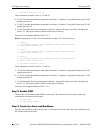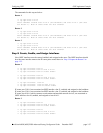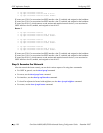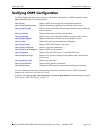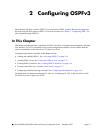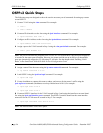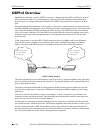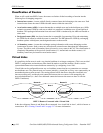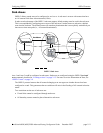
OSPFv3 Quick Steps Configuring OSPFv3
page 2-4 OmniSwitch 6800/6850/9000 Advanced Routing Configuration Guide December 2007
OSPFv3 Quick Steps
The followings steps are designed to show the user the necessary set of commands for setting up a router
to use OSPFv3:
1 Create a VLAN using the vlan command. For example:
-> vlan 5
-> vlan 5 enable
2 Create an IPv6 interface on the vlan using the ipv6 interface command. For example:
-> ipv6 interface test vlan 1
3 Configure an IPv6 address on the vlan using the ipv6 address command. For example:
-> ipv6 address 2001::/64 eui-64 test
4 Assign a port to the VLAN created in Step 1 using the vlan port default command. For example:
-> vlan 1 port default 2/1
Note. The port will be statically assigned to the VLAN, as a VLAN must have a physical port assigned to
it in order for the router port to function. However, the router could be set up in such a way that mobile
ports are dynamically assigned to VLANs using VLAN rules. See the chapter titled “Defining VLAN
Rules” in the OmniSwitch 6800/6850/9000 Network Configuration Guide.
5 Assign a router ID to the router using the ip router router-id command. For example:
-> ip router router-id 5.5.5.5
6 Load OSPFv3 using the ipv6 load ospf command. For example:
-> ipv6 load ospf
7 Create a backbone to connect this router to others, and an area for the router’s traffic using the
ipv6 ospf area command. (Backbones are always labeled area 0.0.0.0.) For example:
-> ipv6 ospf area 0.0.0.0
-> ipv6 ospf area 0.0.0.1
8 Create an OSPFv3 interface for the VLAN created in Step 1 and assign the interface to an area identi-
fier using the ipv6 ospf interface area command. The OSPFv3 interface should use the same interface
name used for the VLAN router IP created in Step 2. For example:
-> ipv6 ospf interface test area 0.0.0.0
Note. The interface name cannot have spaces.



